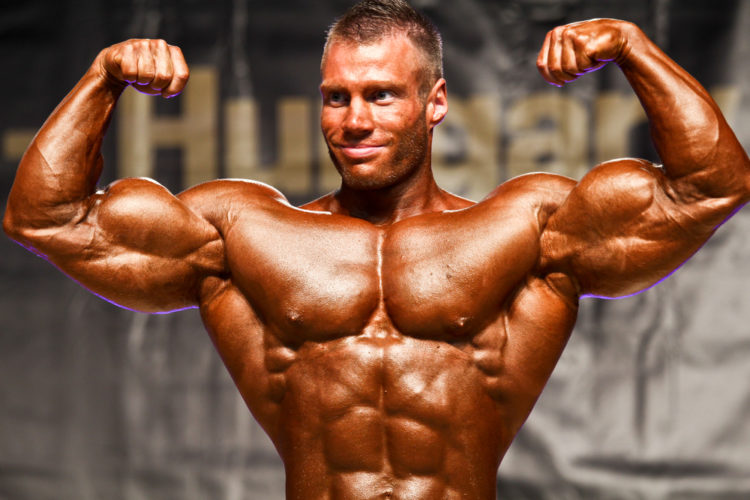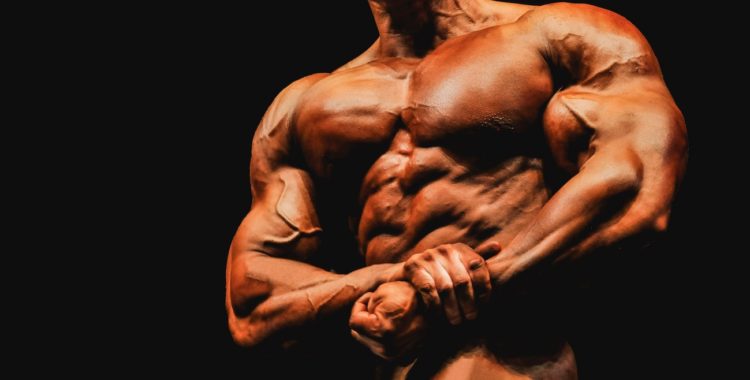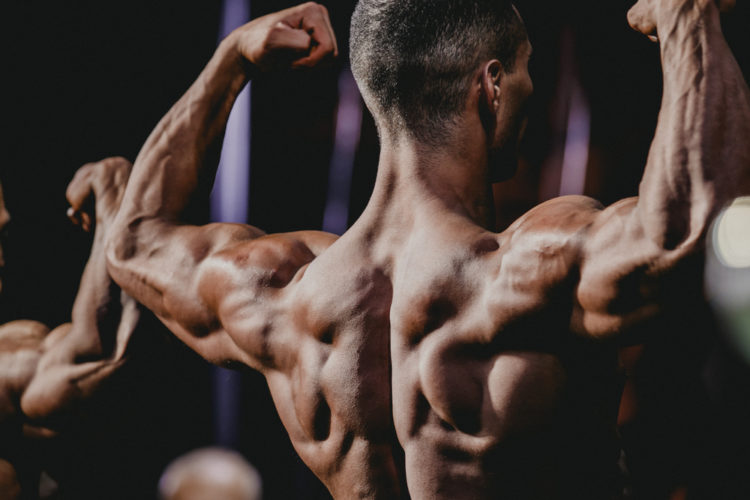Bodybuilding truly deserves a place in the pantheon of Olympic sports. It dates to the original Olympic Games of the ancient Greeks, which inspired the modern Olympics. Between competitive events, the ancients put on impromptu physique shows for the public…
Greater ideals also called me to the Olympics. The IOC and the games are about much more than sports. Pierre de Coubertin, the French aristocrat who founded the ICO and revived the Olympics in 1894, promoted athletics for the good of the world’s young people and to bring them together in a spirit of friendly, clean, sportsmanlike competition. The games were meant to encourage peace, mutual respect, and understanding. The same Olympic spirits reigns within the IFBB…’ (1)
Ben and Joe Weider, Brothers of Iron, 2006
Written in 2006 by Ben Weider — the co-founder of the International Federation of BodyBuilding & Fitness — just two years before his passing, the quote above might seem strange on first viewing. Few would count bodybuilding as a potential Olympic sport, or indeed, even consider the prospect of physique shows at the Games. In our minds, the Olympics is based on feats of strength, agility and endurance. Bodybuilding can seem an odd and incoherent fit. Despite our disbelief, it was this very idea which drove Ben Weider for several decades and continues to drive the IFBB. Aside from his role in the IFBB, which he helped to co-found with his brother Joe in 1946, Ben was one of the few enthusiastic supporters of the idea that bodybuilding should become a bona fide Olympic sport.
Why Ben and why this dream? Part of the reason bodybuilding is what it is today stems from the Weiders’ imagination and determination. Together, Ben and Joe Weider helped revolutionise bodybuilding as a sport, opening it up to the masses and inspiring innumerable lifters. They created the Mr. Olympia contest, oversaw a magazine empire counting several highly read bodybuilding journals, ran a multi-product supplement chain and helped to popularise stars like Arnold Schwarzenegger. Such was Joe’s keen eye for stardom that he was christened the ‘Master Blaster’ and the ‘Trainer of Champions’.(2) The Olympics marked one more mountain waiting to be climbed. Bodybuilding’s journey to the Olympic stage is still, however, ongoing. With that in mind, today’s article highlights the Weiders’ several decade attempt to bring bodybuilding to the Olympics before evaluating the sport’s current relationship with the Olympic Games today.
https://www.instagram.com/p/B1VI_KPBNi4/
The Odd Couple: Bodybuilding and the Olympics
Before discussing the Weiders’ attempts to establish bodybuilding as an Olympic sport, an obvious objection arises. Is bodybuilding actually a sport? It depends on what your understanding of sport is.
In one of the first large scale studies of sport itself, Allen Guttman defined modern sports along seven key points. The first of these, namely that it is secular, rational, specialised and open to all, does accord with bodybuilding.(3) Anyone can do it, it’s based on rationalised activities, it requires a degree of specialization and it is not a religious ritual or form of worship. Where bodybuilding falls down on the sporting front largely comes down to Guttman’s remaining criteria of quantifiable records and bureaucratic rule making.(4) Guttman would later cite the importance of fun in sport as well but, given you’re reading BarBend, I suspect we all agree lifting weights can be fun and similar to play.
The heart of the bodybuilding problem is that it is an inherently subjective sport. Bodybuilding is a sport, after all, where an individual can win the Mr. Olympia contest despite many others believing that the winner had a subpar physique compared to other competitors.(5) Bodybuilding is a pursuit in which different judges apply different metrics to the ideal body and bodybuilding is an activity with unclear definitions regarding the perfect body. As an activity, the sport is inherently defined by its subjectivity.
The 100-meter sprint is objective by its very nature: whoever passes the finish line first wins. Bodybuilding is rarely so simple and this has often been the major objection to its Olympic inclusion.
Equally problematic is the potentially scandalous nature of the sport. In the first instance, bodybuilding features half naked men and women flexing their muscles to the applause of an assembled audience. For gym goers, bodybuilding may make a certain amout of sense but for the general public, bodybuilding has, for many decades, been viewed as a strange and fringe activity.(6) It was for this reason that Ben Weider petitioned the President of the International Olympic Committee (IOC), Lord Killanin, over bodybuilding’s Olympic inclusion in the 1970s, he was told bluntly that it wouldn’t happen over Killanin’s ‘dead body’.(7) For those seeking to keep the Olympics respectable, like Killanin, bodybuilding seemed entirely out of bounds.
https://www.instagram.com/p/BZKKaDageme/
The elephant in the room is, of course, the issue of steroids. Despite repeated and increasingly intricate steroid scandals, the IOC takes a firm and active stance against performance enhancing drugs of any kind. John Fair’s work on weightlifting and bodybuilding found that anabolic steroids first infiltrated bodybuilding in the mid-twentieth century.(8) Since that time, the use of steroids has increased exponentially. Including bodybuilding in the Olympics gives the IOC and the IFBB two choices
- allow natural bodybuilding shows on the Olympic stage, or
- permit athletes on performance enhancing drugs to compete.
The first option raises question marks about how popular such a contest would be. The second kind of contest threatens one of the Game’s main tenants: drug free and fair competition. The obstacles are large but remarkably, bodybuilding has slowly, but surely, made progress towards the Olympic stage.
Ben Weider’s Impossible Dream
For those skeptical of Weider’s intentions and indeed, his opening quotation, Nigel Crowther found that the first male physique shows did date back to Ancient Greece.(9) Like the bodybuilding shows of today, these Ancient Greek shows were open to athletes from across age groups and, at times, were open to men and women. So the shows do have an ancient Greek lineage. Turning to more recent times, we have already covered the first bodybuilding shows of the early 1900s which were an undoubted success. Given this history and the fact that weightlifting came to the Olympics in 1896, it seems strange that the first discussion of Olympic bodybuilding came in the 1960s. The Weider brothers were pivotal in this change.
[Related: The Untold Story of the First Weightlifting Competition]
https://www.instagram.com/p/BxVi08IjgvT/
Part of this change comes from the organization of bodybuilding during this time mid-twentieth century. John Fair’s work on the Mr. America contest highlighted the strange and disorganized world of American bodybuilding.(10) From 1939 to the early 1960s, bodybuilding was was centered around one competition: The Mr. America contest.
Organized and promoted by the Amateur Athletic Union, the contest was a mixture of weightlifting and bodybuilding. Under the supervision of Bob Hoffman, the founder of York Barbell, bodybuilding was very much a secondary sport. To be Mr. America, contestants were evaluated on their bodies but also their athleticism — typically demonstrated through lifting weights — and even their personality.
Under the AAU, bodybuilding was the afterthought of Olympic weightlifting. It was something to be tolerated but rarely praised. This changed as bodybuilding became increasingly popular. More men competed in the contests and new entrepreneurs, like the Weiders, entered the game. Returning to John Fair’s study, the Weiders first came to the scene in 1945 when they formed the IFBB, but they didn’t truly make an impact until the 1960s.(11) The most obvious example of this was of course the Mr. Olympia contest, first hosted in 1965. Unlike the Mr. America contest, which judged competitors on strength, looks, and personality, the Mr. Olympia contest was solely a bodybuilding competition. Needless to say, it grew greatly in popularity and influence in the United States soon after.
By the end of the 1960s, the Weiders’ IFBB organization counted 43 different member states.(12) Where the AAU’s remit was just the United States, the Weiders were worldwide. Globally, the only bodybuilding competitions of merit were the Mr. Universe and the Mr. World contests, the latter which was hosted by the International Weightlifting Federation (IWF) from the early 1960s. When the IWF discontinued its Mr. World competition in 1969, the Weiders jumped at the opportunity to further their global importance by hosting their own global shows. Speaking that year, Ben Weider revealed that
I saw in international sporting circles the sort of prestige that the ordinary bodybuilder would like to have. We were prepared to give up our authority and set up a democratic organization with proper elections and government to achieve these aims.(13)
In a bid to achieve these aims, Ben worked diligently with the then secretary of the IWF, Oscar State, to draw up a new constitution for the Weiders’ IFBB. At an IFBB meeting in 1970, the new constitution was passed among IFBB members. Far from a needless piece of bureaucratic administration, Ben’s work with Slate marked the beginning of Ben’s Olympic goal.(14) As secretary of the IWF, Slate had an intimate knowledge of what the IOC looked for when reviewing new Olympic sports. As a global entity, with a rigid and well drafted constitution, the IFBB could next move towards the IOC.
[More from the author: The Untold History of the Barbell]

The Quest for Olympic Gold
Buoyed by the new IFBB constitution, the Weiders made their first major attempt to join the IOC. In November 1970, the IFBB applied to the General Assembly of International Sports Federations (GAISF), the group responsible for overseeing international amateur sports.(15) Simultaneously, the Weiders entered their IFBB into the International Council of Physical Education and Sport, a UNESCO organization.(16) It wasn’t the IOC, but it was a pivotal starting point toward Olympic status. At the GASIF congress in 1971, the IFBB was accepted for full membership and was thereby welcomed into the broader international sporting fold. It was the first time that the IFBB had been accepted by a broader sporting body. The GASIF congresses were also significant in bringing together members from the IOC and the IFBB.
At the 1971 congress, for example, Ben Weider met with the Hungarian delegate and IOC member, Dr. Arpad Csanadi, about his intention to apply for IOC status.(17) Csanadi, impressed with the IFBB’s application to the GASIF, encouraged Weider to apply to the IOC. It was the first time an IOC member had entertained Weider’s plans and undoubtedly encouraged him to push on. The following year, at the GAISF Congress, Ben met with Avery Brundage, the head of the IOC and Baron Killanin, Avery’s eventual successor, about joining the IOC.(18) Nothing was promised but Weider was clearly impressed. After the trip, Weider claimed that ‘the IFBB had made more international progress than it had made in the past twenty-five years.’(19)
Despite Weider’s optimism, broader sporting concerns prevented further progress. By the mid-1970s, the IOC froze the number of sports in the Olympics. Officials felt that too many Olympic sports were crowding each other out, that crowds were split and that television figures would fall in any more sports entered the Olympic fold. For the IFBB, it meant that Olympic entry, for the time being, was blocked.

Overcoming the Barriers
With a direct route to Olympic membership shut off, the Weiders began a circuitous, decade long route to get IOC recognition. Much of this was a continuation of work already going on, especially with the GAISF.
From the mid-1970s, the Weiders took a leading role in establishing an alternative sporting event to the Olympic games. The result of their and the GAISF’s efforts were the World Games, which began in 1981.(20) The World Games became a temporary stop gap for those international sports not welcomed by the Olympic games. Importantly, the World Games were not the only avenue the Weiders targeted. In the late 1970s, the Weiders approached the Asian Games and Pan-American Games about becoming members. Even though they fell at the first hurdle, the Southeast Asian Games accepted bodybuilding for its regional games in 1979.(21)
Luckily for the Weiders, bodybuilding continued to impress officials outside the IOC. In 1985, the Olympic Council of Asia, which oversaw the Asian Games, accepted the IFBB’s application for a full inclusion in the Games.(22) Slowly other organizations followed suit. In 1994, the Pan American Sports Organization accepted bodybuilding into the Pan American Games. After the Pan American Games, bodybuilding was brought into the Central American Games, the Caribbean Games, the Middle East and the Pan-Arab Games.(23)
At this point, it’s important to note that while bodybuilding was accepted into these games, it took a long time for an actual bodybuilding contest to be held in these Games. How long? The first bodybuilding contest in the Pan American Games was in 2019!(24)
Despite the lengthy wait, bodybuilding’s prestige was enhanced through its inclusion in these games for one simple reason. All of these regional games are IOC affiliates. There was thus a hope that bodybuilding’s inclusion in such games would eventually lead to an Olympic platform. This explains why in 1996, after securing recognition from these regional contests, the IFBB once more applied for Olympic recognition.(25) Stressing that bodybuilding was now a ‘bona fide sport’ thanks to the regional games, a strong petition was made for bodybuilding’s inclusion. Somewhat realistically, the IFBB bid wished for ‘demonstration sport’ status, which meant that bodybuilding would be recognised as a sport but would not yet be an official one.(26)
Remarkably, this approach worked. In January 1998, the IOC’s Executive Board granted recognition to the IFBB. Immediately the then president of the IOC, the Marqués de Samaranch, faxed Ben Weider a copy of the good news:
Dear Mr. Weider, Friend,
It is my pleasure to inform you that the Executive Board of the International Olympic Committee decided yesterday, in its meeting in Nagano, to grant recognition to the International Federation of Bodybuilders (IFBB) as a Recognized Federation, pursuant to Rule 29 of the Olympic Charter…
…. Finally, I should like to take this opportunity to congratulate you for all the efforts made in order to reach this goal, and to welcome you into the Olympic Family.(27)

Bodybuilding and the Olympics Today
In 1998, it looked like Ben Weider’s improbable dream might actually happen: bodybuilding would become an international sport at the Olympics.
Progress did, however, stall. From 1998 to 2002, the IOC’s enthusiasm for bodybuilding waned considerably. Reflective of this was the IOC’s decision in 2002 to withdraw its official recognition of bodybuilding.(28)
This did not stop efforts at full inclusion. In the interim, the IFBB has worked strenuously to achieve full Olympic states, becoming affiliated with the Olympic Council of Asia (OCA), the Supreme Council for Sport in Africa, the Association of Pan American Sport Federations (ACODEPA) and roughly 90 separate National Olympic Committees.(29) In 2006, Rafael Santonja succeeded Ben Weider’s successor as IFBB president and has continued Ben’s efforts.
As mentioned previously, the first IFBB competition at the Pan American Games was held in 2019. Speaking on the event, Santonja clearly and explicitly stated that his vision for bodybuilding is exactly the same as Ben Weider’s namely, full Olympic status.(30)
Whether or not this will happen is anybody’s guess. In the build up to the 2020 Olympics there were a series of not unrealistic rumours that bodybuilding may be included as a demonstration sport. Likewise the IFBB’s association with the Pan American Games, the OCA, and numerous national Olympic committees points to a growing familiarity and appreciation for bodybuilding in international sports.
We have yet to see bodybuilding in the Olympics but there is every reason to believe that in the near future, we may have a Mr. Olympia and a Mr. Olympic. From Ben’s pipedream in the 60s to 2019, a great deal of progress has already been made.
References
- Weider, Joe, Ben Weider, and Mike Steere. Brothers of Iron. Sports Publishing LLC, 2006, 71.
- Ibid., 1-10.
- Guttmann, Allen. From ritual to record: The nature of modern sports. Columbia University Press, 2004, 54.
- Ibid.
- Fair, John, “The Intangible Arnold: The Controversial Mr. Olympia Contest of 1980”, Iron Game History, 11.1 (2009): 4-22.
- Steele, Ian H., Harrison G. Pope Jr, and Gen Kanayama. “Competitive Bodybuilding: Fitness, Pathology, or Both?.” Harvard Review of Psychiatry 27, no. 4 (2019): 233-240.
- Hatfield, Frederick C., “Bodybuilding as an Olympic Sport”, Sportscience News Mar-Apr (1998): 4.
- Fair, John D. “Isometrics or steroids? Exploring new frontiers of strength in the early 1960s.” Journal of Sport History 20, no. 1 (1993): 1-24.
- Crowther, Nigel B. “Male «Beauty» contests in Greece: The Euandria and Euexia.” L’antiquite Classique (1985): 285-291.
- Fair, John D. Mr. America: The tragic history of a bodybuilding icon. University of Texas Press, 2015.
- Ibidl., 93-126.
- Woycke, James. Esprit de Corps: A History of North American Bodybuilding. Western University, 2016, 117.
- Ibid., 117.
- Ibid., 118.
- Webster, David, and Doug Gillon. Barbells and beefcake: Illustrated history of bodybuilding. DP Webster, 1979, 141-142.
- Ibid.
- Woycke, Esprit de Corps, 119; Oscar State, “The I.F.B.B. Congress & “Mr. Universe” Contest”, Muscle Builder, 16. 2 (1975): 28.
- Fair, Mr. America, 217.
- Roach, Randy. Muscle, smoke, and mirrors. Vol. 1. AuthorHouse, 2011, 175.
- Woycke, Esprit de Corps, 119-120.
- Ibid.
- Weider, Weider, and Steere. Brothers of Iron, 290.
- Ibid.
- Mike Rowbottom, “President Rafael Santonja – building a body of opinion to take IFBB towards the Olympics”. Inside the Games. Available at: https://www.insidethegames.biz/articles/1062811/president-rafael-santonja-building-a-body-of-opinion-to-take-ifbb-towards-the-olympics.
- Woycke, Esprit de Corps, 120.
- Ibid.
- Rowbottom, “President Rafael Santonja.”
- Ibid.
- Ibid.